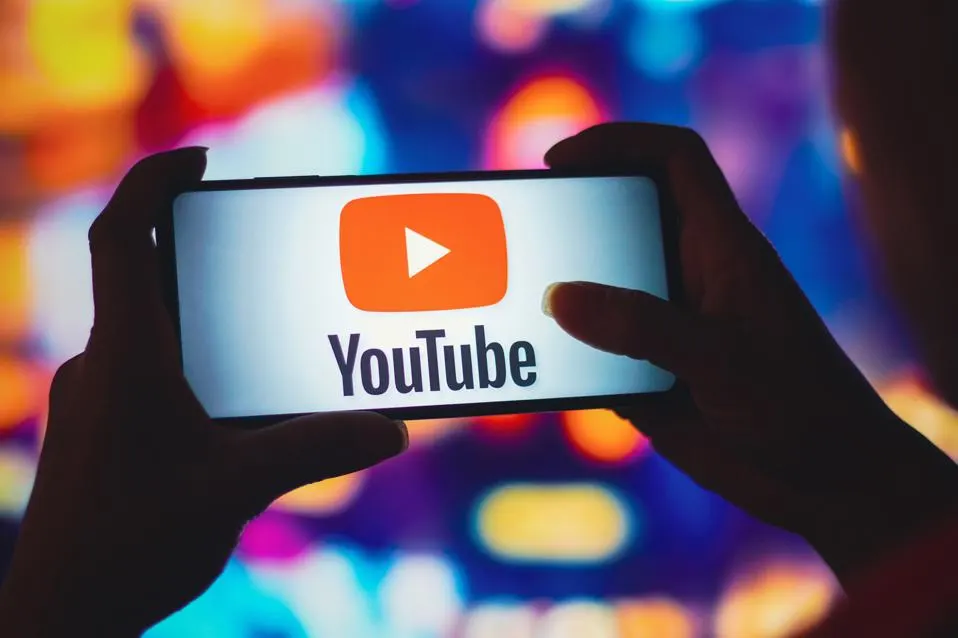In the age of digital media and online content consumption, YouTube has emerged as a dominant platform for both creators and viewers. With billions of hours of video content uploaded and viewed daily, it’s no wonder that YouTube is a hotspot for advertisers seeking to reach a massive audience. However, the user experience on YouTube has been increasingly marred by the intrusion of ads. This is where YouTube ad blocker come into play, providing users with a way to enjoy their favorite videos ad-free. In this blog post, we will delve into the world of YouTube ad blocker, discussing their impact, legality, and the ongoing battle between users and advertisers.
The Rise of YouTube Ads
YouTube, which was founded in 2005, started as a platform for sharing user-generated content, and its creators have since become internet sensations, while others have turned their channels into lucrative businesses. With such a vast audience, advertisers soon recognized the potential of YouTube as a platform to reach their target demographic. As a result, YouTube implemented various ad formats, including pre-roll ads, mid-roll ads, and post-roll ads, along with banner ads, sponsored videos, and more. These advertisements generate significant revenue for both YouTube and content creators, allowing the platform to offer free access to users.
The Ad Blocker Dilemma
While YouTube’s ad-supported model keeps content free for users, it also means that advertisements can be intrusive and disrupt the viewing experience. Users often find themselves subjected to unskippable ads, repetitive commercials, and even longer ads that can last for several minutes. To combat this issue, many users turn to ad blockers, which are browser extensions or software applications designed to block or remove ads from websites, including YouTube.
Understanding Ad Blockers
Ad blockers come in various forms, but they all serve the same purpose: to prevent ads from displaying on websites. These blockers work by identifying ad-related elements on a webpage and preventing them from loading, effectively making ads invisible to the user. Ad blockers can target different types of ads, including text-based ads, image ads, and video ads like those on YouTube. Some of the popular ad blockers for YouTube and other websites include AdBlock, AdBlock Plus, uBlock Origin, and AdGuard.
The Impact of YouTube Ad Blocker
- Enhanced User Experience: The most obvious impact of YouTube ad blocker is the enhancement of the user experience. Users can watch videos without the interruption of ads, leading to a smoother, more enjoyable viewing experience.
- Improved Page Load Times: With ad blockers, webpages load faster, as they don’t have to fetch and display ads. This can be particularly beneficial for users with slower internet connections.
- Increased Privacy and Security: Some ads can be used to track user behavior and collect data for targeted advertising. Ad blockers help enhance privacy and security by blocking these tracking scripts.
- Reduced Data Usage: Ads can consume a significant amount of data, especially video ads. Blocking these ads can result in reduced data usage for users with limited data plans.
- Bandwidth Savings: By blocking ads, users can save on bandwidth, which can be crucial for individuals in regions with limited access to high-speed internet.
The Battle Between Users and Advertisers
The use of ad blockers on YouTube has sparked a tug-of-war between users and advertisers. On one hand, users argue that they have the right to control their online experience and protect their privacy by blocking ads. On the other hand, advertisers contend that their revenue is being siphoned off and that content creators are losing out on their fair share of earnings. This ongoing battle has led to several important discussions and developments:
- Anti-Ad Block Measures: To counter the effects of ad blockers, YouTube and other websites have implemented anti-ad block measures. This includes displaying messages asking users to disable their ad blockers or preventing content from playing until the ad blocker is disabled. However, these measures have led to mixed results, with many users choosing to bypass them or find workarounds.
- Legal Concerns: Ad-blocking is a legal gray area, and the use of ad blockers can potentially infringe on YouTube’s terms of service. However, the legality of ad blockers is a matter of ongoing debate and varies by jurisdiction. Some courts have ruled in favor of ad-blocker users, considering it a form of content customization, while others have ruled in favor of content creators, arguing that it hinders their ability to monetize their work.
- YouTube Premium: YouTube offers a paid subscription service called YouTube Premium, which provides an ad-free viewing experience, offline downloads, and access to exclusive content. By offering this service, YouTube provides an alternative to ad-blocker users, allowing them to support content creators while enjoying an ad-free experience.
The User’s Perspective:
From the user’s viewpoint, the appeal of YouTube ad blocker is clear. They provide a way to regain control over the browsing experience. Users can choose when and how they interact with advertisements, rather than being bombarded with them before, during, or after their chosen content.
One of the strongest arguments in favor of using ad blockers is the intrusive nature of some online ads. For instance, unskippable video ads that interrupt content can be a source of frustration, especially when they are long and repetitive. Ad blockers allow users to skip these interruptions, leading to a smoother and more satisfying video-watching experience.
Additionally, users often appreciate the privacy and security benefits of ad blockers. Online advertisements often come with tracking scripts that collect data on user behavior for targeted advertising. Ad blockers can prevent these scripts from executing, providing users with a sense of online privacy and security.
The Advertiser’s and Content Creator’s Perspective:
Ad-blocking technology, while celebrated by users, is a source of frustration for advertisers and content creators who depend on advertising revenue. When users block ads, they indirectly reduce the income potential for content creators and limit the funds available for producing high-quality content.
Advertisers argue that the free, ad-supported model is essential for platforms like YouTube to provide access to a vast range of content for users without direct subscription fees. By blocking ads, users are essentially undermining this model.
The struggle between advertisers and ad-block users has pushed the advertising industry to develop more creative and less intrusive ad formats. However, these efforts have been met with mixed success. Users often find themselves in a Catch-22 situation, where they feel forced to use ad blockers because advertisers fail to deliver non-intrusive ads.
Legal and Ethical Considerations:
The use of ad blockers raises various legal and ethical questions. Some of the key issues include:
- Terms of Service: Most websites, including YouTube, have terms of service that users agree to when they create accounts or use the platform. These terms often include provisions against using ad blockers. Users who employ ad blockers may be violating these terms and risk having their accounts suspended or banned.
- Intellectual Property: Content creators argue that by blocking ads, users are essentially taking their content without providing the compensation they deserve. This raises ethical concerns about supporting content creators and the value of creative work.
- Fair Compensation: Many content creators depend on ad revenue to support their livelihoods. When users block ads, they reduce the income potential for these creators, potentially threatening the sustainability of their channels.
- Regulatory Framework: The legality of ad-blocking is a complex issue that varies by jurisdiction. Courts and regulatory bodies in different countries have offered varying interpretations of the practice. Some have ruled in favor of ad-block users, considering it a form of content customization and free speech, while others have favored content creators and advertisers, stating that ad-blocking infringes on their ability to monetize their work.
- Alternative Models: Platforms like YouTube have introduced alternative models like YouTube Premium to address the ad-blocking issue. This subscription service offers an ad-free experience, offline downloads, and exclusive content. It allows users to support content creators directly while enjoying an ad-free experience.
The Ongoing Evolution:
As technology and online advertising continue to evolve, the battle between ad-block users and advertisers is unlikely to subside anytime soon. Ad-blocking technology will likely continue to improve, prompting advertisers to adapt their strategies to bypass ad-blockers, perhaps with less intrusive, more engaging ad formats.
The legal landscape surrounding ad-blockers is also likely to evolve. Courts and regulatory bodies may continue to grapple with questions of user rights, intellectual property, and the sustainability of the online advertising ecosystem.
In conclusion, YouTube ad blocker represent a complex and contentious issue in the ever-evolving world of online content consumption and digital advertising. While they empower users to have more control over their online experiences, they also pose challenges for advertisers and content creators who rely on ad revenue. As the battle between users and advertisers persists, it will shape the future of online advertising, content creation, and how users access and interact with online content.
Conclusion
YouTube ad blocker have become a crucial tool for users who want to enjoy their favorite content without the annoyance of intrusive ads. While they offer benefits like enhanced user experience, improved page load times, and increased privacy, the use of ad blockers has also led to a contentious battle between users and advertisers.
As the battle continues, it is essential to consider the implications of using ad blockers, including their potential impact on content creators and the legal concerns surrounding their use. It’s also worth noting that YouTube itself has responded to user demands for an ad-free experience by offering YouTube Premium, which allows users to support content creators while enjoying ad-free content.
In the end, the relationship between YouTube, its users, and advertisers is a complex one, and the use of ad blockers is just one aspect of this evolving landscape. As technology and the legal framework continue to evolve, the battle of the browsers and YouTube ad blocker will undoubtedly persist, shaping the future of online advertising and content consumption.
































